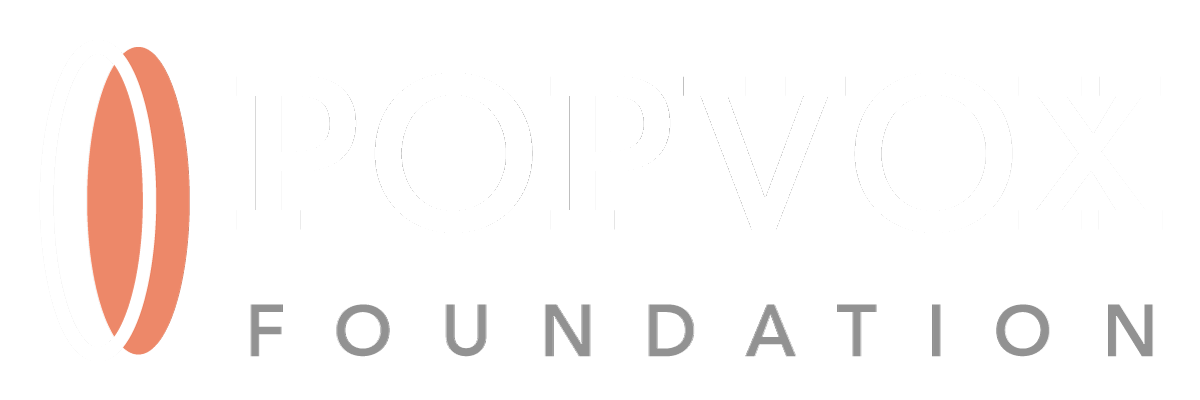Tech That Works: Exploring Product Model Funding for Government Technology
BY AUBREY WILSON
On May 12, the Niskanen Center and POPVOX Foundation hosted "Tech That Works: Unlocking Better Models for Digital Government," a briefing for Congressional staff focused on innovative approaches to funding the development of government technology.
Working to bridge understanding between legislative intent and Executive branch implementation of public policy, the session discussed how adopting product model funding — a flexible, iterative approach widely used in the private sector — can save money and boost outcomes of federal government technology development and maintenance. A panel of experienced Executive branch technology program managers shared their first-hand experiences through practical examples and interactive demonstrations.
Ann Lewis, the former Director of the Technology Transformation Service at the General Services Administration showcased the high costs of government’s development and launch of past .gov websites and contrasted the price tag to what an agile website creation process could create.
Merici Vinton, former US Digital Service (USDS) senior advisor to the Internal Revenue Service (IRS), shared her personal experience as Deputy of Direct File, showcasing how an iterative, user-feedback driven design process leads to better website design and public approval.
Luke Farrell, former USDS product lead detailed to the Center for Medicaid Services (CMS) explained the first-hand experiences of traveling to support state Medicaid systems and leading a dynamic, small team of technologists who were quickly able to mitigate issues to drastically improve service delivery.
All three panelists engaged in a lively discussion, energized by the chance to share with Congress what they wished appropriators and authorizers could better understand about on-the-ground creation of technology within federal agencies.
The overarching theme was clear: increasing flexibility and capacity within agencies to develop technology that meets desired outcomes while accounting for the reality of situations leads to less waste and greater impact. This approach stands in contrast to the more traditional approach often taken by Congress, which in the past, has emphasized rigid structures, over-proscribed delivery specifications, and an inflexible funding model. The panelists’ demonstrations and shared experiences highlighted how small changes in policy language and a cultural change to enable agencies to hire and maintain internal technologists can dramatically improve technology implementation by Executive branch agencies and decrease reliance on third-party contractors.
Project vs. Product Funding Model
Traditionally, funding the creation of government technology follows the pattern of “project” funding. This often consists of a large investment at the beginning (without much foresight or runway), a rushed development cycle often resulting in a lacking product delivery, followed by an "operations and maintenance" phase where systems gradually deteriorate, ultimately requiring costly "modernization" efforts. As Jennifer Pahlka explains, this approach appears cost-effective in the short term, but becomes significantly more expensive over time while failing to meet evolving user needs.
In summary, the project model typically involves heavy upfront investment in gathering requirements, user testing in the very late stages, and dramatic staffing fluctuations that lead to a lack of consistent product management, knowledge retention, and overall product improvement.
In contrast, the product funding model is an agile approach that calls for more moderate, consistent investment over time with a small team that gradually grows as needed. This approach enables early user testing (to understand how implementation can best reach desired outcomes), continuous updates that prevent technology "rot," and steady innovation that works to ensure that new government technology is not outdated before it is even launched. Despite appearing more expensive in the short term due to "scary ongoing expenses," the product model ultimately costs less, delivers better services to constituents, and creates systems that evolve with changing policy requirements and user needs.
So, what is holding government back from adopting a product model? As Pahlka notes, achieving this shift requires Congress to have open communication with implementors in the agencies to enable ongoing technology investment rather than sporadic, one-off project allocations.
This event was the second in a series focused on better implementation of policy and strengthening the feedback loop between Legislative and Executive branches. The previous event, "The Implementation Gap," laid groundwork for understanding the disconnect between legislative intent and execution. This event built on that foundation by honing in specifically on funding strategies and how legislation can best be crafted to support agile technology development within federal agencies.
Why This Matters
Technology adoption is essential to improving government's internal operations and public service delivery. By integrating product model funding approaches, Congress can empower federal agencies to build and maintain technology systems that more effectively serve their intended purpose and result in better service to constituents.
About the Organizers
POPVOX Foundation is a nonpartisan nonprofit organization working to help democratic institutions keep pace with a rapidly changing world. Through publications, events, prototypes, and technical assistance, they support public servants and elected officials in better serving constituents and creating better policy.
The Niskanen Center, named "The Most Interesting Think Tank in American Politics" by TIME Magazine in 2023, promotes policies advancing prosperity, opportunity, and human flourishing, guided by the belief that a free market and effective government are mutually dependent.
